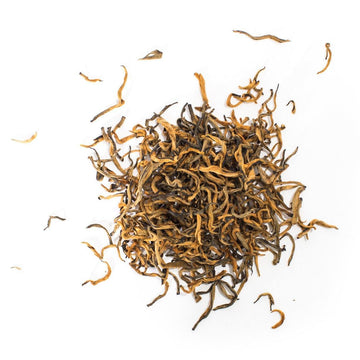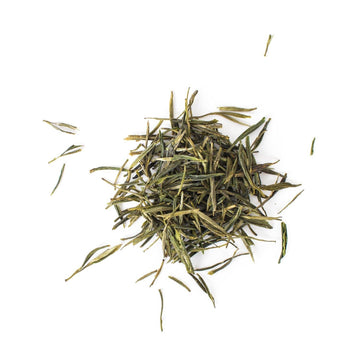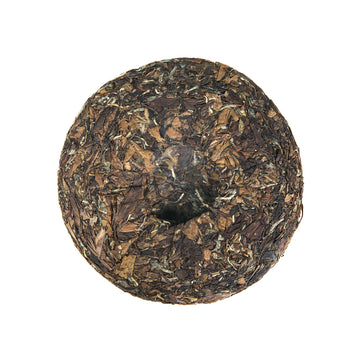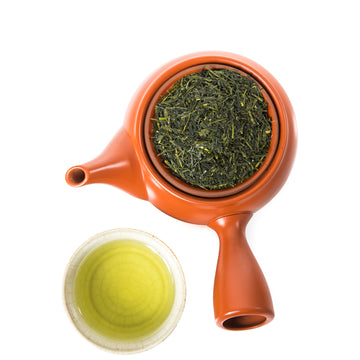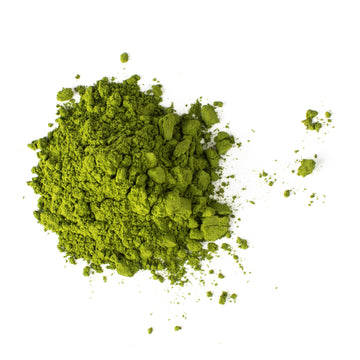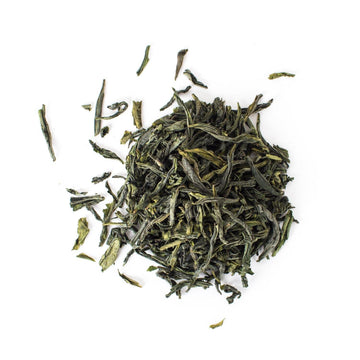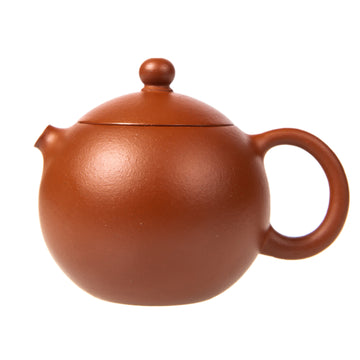Learn About Tea. FAQ
What is Tea?
Did you know that tea is the most consumed drink in the whole world after water? That's right! But what is tea? Furthermore, what is tea made of?
Many may be surprised to find out that tea types – White Tea, Green Tea, Yellow Tea, Oolong, Black Tea, and Hei Cha (incl. Pu-erh) – all come from the same plant! That plant is the mighty Camellia Sinensis. Camellia Sinensis is an evergreen plant native to China. When tended to, you'll usually see it growing as bushes. However, it can become as big as a tree when allowed to grow wild or grow as an actual tea tree. You can find some ancient tea trees in southwest China, northern Vietnam, Laos, and Myanmar.
In the 19th century, British botanist Robert Fortune successfully smuggled tea plants and seeds (Camellia Sinensis var. Sinensis, aka Chinese tea) from China to India as part of Britain's efforts to break China's monopoly on tea production. This was a strategic move by the British East India Company to establish tea plantations in India, particularly in the Assam and Darjeeling regions. It was later discovered that the Assam region was home to its own native tea plant, Camellia Sinensis var. Assamica. The Assam tea plant became the dominant variety in India, especially for producing black tea, while both varieties continue to be cultivated around the world.
With time, Camellia Sinensis spread across the globe, providing millions with its tea leaves.
On the other hand, although called teas, herbal teas are instead considered tisanes. They don't come from the Camellia Sinensis plant but from various herbs, fruits, berries, and spices. Tisanes are almost always caffeine-free (with rare exceptions, such as yerba mate), while all teas derived from Camellia Sinensis are caffeinated and contain L-theanine – a substance exclusive to Camellia Sinensis.
History of Tea
Tea dates back arguably 5,000 years. The first written records of the tea plant's human cultivation date back approximately 3,000 years, in southwestern China. There, people consumed the leaves of Camellia Sinensis in various forms for centuries. People mostly used it as medicine before the Tang Dynasty (618-906 AD). When Lu Yu wrote his famous tea book, the Cha Jing, drinking tea for pleasure began to gain popularity throughout China. Eventually, people began to pay more attention to the flavor of the tea leaf itself, and farmers would cultivate tea to offer to the royal court as tribute.
Tea was introduced to Japan in the 12th century by a Buddhist priest named Eisai. Then, it made its journey West thanks to Portuguese merchants who brought it to Europe in the 16th century.
When tea made its way to Europe, its popularity spread like wildfire. Of course, not everyone could afford this delicious drink at the time. However, everyone wanted to get their hands on some tea leaves. Governments used tea as an essential trade product and a valuable gift throughout history. After eventually being smuggled out of China, it now grows worldwide.

What are the Different Types of Tea
Green tea, White Tea, Yellow Tea, Oolong Tea, Black Tea and Hei Cha (incl. Pu-erh) are the six main types of tea.
How Many Types of Tea are There?
There are six main types of tea:
• White Tea
White tea (白茶) undergoes the least amount of processing and is a lightly oxidized tea. Due to the sparing 2-step processing, tea leaves remain as close as possible to their original state. White teas possess a sweet flavor and a smooth mouthfeel. Silver Needle Tea is one of the most popular white teas.
• Green Tea
Green tea (绿茶) is the least oxidized type of tea. It's best to brew most green teas at a low temperature to preserve their freshness and avoid a bitter taste. The popular Japanese powdered tea, matcha, is also a green tea, made from shaded leaves called tencha (碾茶), which are ground into a fine powder.
• Yellow Tea
Yellow tea (黄茶) is a rare tea category. Making this tea is not easy and requires great skill, due to a processing step called Men Hunag (闷黄) – "Stewing Yellow". This step eliminates the grassy notes of the tea and makes it sweeter. Unfortunately, in today's tea world, Yellow Tea is practically on the verge of extinction.
• Oolong Tea
Oolongs (乌龙) are semi-oxidized teas. During production, farmers shake, bruise, and then roll the tea leaves, which releases oils trapped within the leaves and results in a rich taste. Some oolongs are lightly oxidized and closer to green teas. Others, the deeper oxidized ones, are dark and robust. Their taste leans closer to black tea. Oolong teas undergo various stages of roasting, resulting in distinctive flavor profiles. The main Oolong-producing regions are northern and southern Fujian, Guangdong, and Taiwan.
• Black Tea (Hong Cha)
What we call black tea in the West is red tea (hong cha 红茶) in the East. Black tea is a fully oxidized tea with a mellow and sweet flavor. We can brew black teas at high water temperatures. Lapsang Souchong is an ancient black tea with an intense smoky profile since farmers smoke it over pinewood. Today, many types of black tea exist, including Non-Smoky Lapsang Souchong.
Black tea is a popular tea in the West. It was black tea, mostly exported from China, because it didn't spoil during lengthy sea voyages. Unlike green teas, which don't stay fresh for long, red teas retain a pleasant taste over relatively long periods. In China itself, merchants viewed black tea as an inferior export product, and most people enjoyed green tea. It wasn't until relatively recently that quality black teas started gaining popularity in China.
• Pu-erh Tea
Pu-erh teas (普洱) have an ancient history of over 2000 years. Pu-erh is a kind of fermented tea common in China. It's a geographically specific product, with the term "pu-erh" being geographically protected, so farmers can only produce it in Yunnan, China. Although tea leaves for pu-erh tea are grown and collected in the neighboring regions such as Burma, Vietnam, and even Thailand, they don't have the right to be called "pu-erh". It is a Chinese fermented tea with a strong, robust, sometimes bitter taste that might take a while to get used to. However, it's a complex and exciting tea that has been used in Traditional Chinese Medicine for centuries and is excellent for digestion.
• Liu Bao Tea and other Hei Cha
Hei cha (黑茶) is a post-fermented type of tea. This means that fermentation is still ongoing even after the completion of the production process. This tea dates back hundreds of years and has excellent medicinal properties. Furthermore, it's sweet, nutty, mellow, and easy to prepare! A traditional hei cha preparation method is boiling the tea leaves.
Liu Bao Hei Cha is a unique tea within this category. It's similar to ripe pu-erh but different. Liu Bao is a traditional tea from Guangxi province, where it appeared during the Qing dynasty. The production process of Liubao tea was at the base of the creation of artificial fermentation at the Menghai tea factory during the '70s. They were the first ones to produce artificially fermented pu-erh.
• Tisane
Tisanes are what we also call herbal teas or herbal blends. These aren't tea leaves derived from Camellia Sinensis but various herbs, fruits, and rooibos.
• Tisane vs. Tea
A tisane is (almost) always caffeine-free, while tea isn't. Tisanes are suited for having before bed and are perfect for kids.
The Difference Between Raw and Ripe Pu-erh Tea
There are two types of pu-erh — raw pu-erh (sheng pu-erh 生普洱) and ripe pu-erh (shou pu-erh 熟普洱). Pu-erh is usually made from Camellia Sinensis var. Assamica – a broad-leaf tea tree that is native to Yunnan, China.
Both sheng and shou pu-erh come from the same crude product – Mao Cha, which is processed similarly to green tea but with some oxidation and transformation still happening.
Then, raw pu-erh gets compressed into cakes and left to age, often for many years. It is refreshing and slightly bitter at first. As it ages (for many years and under the right conditions), the taste transforms. The bitterness and astringency transform into sweetness, and the taste becomes more rounded.
Ripe pu-erh, on the other hand, undergoes a process called "wet-piling", which artifically ferments the tea. During this stage, the tea undergoes deep microbial fermentation over a relatively short period, typically ranging from a few weeks to a month. While shou pu-erh can be consumed young, it also benefits from further aging. The taste of this fermented tea from China is often robust, earthy, sweet and mellow.
Pu-erh tea caffeine content is often (but not necessarily) high compared to other types of tea. However, it's still far less than a cup of coffee. When drinking this fermented tea from China, you will feel alert and productive, yet without the jittery feeling and caffeine crash that coffee gives you.
Health Benefits of Tea
A quick Google search will show you claims that tea clears skin, halts cancer, or melts body fat. For the most part, scientists haven't proven these claims. Indeed, research generally supports the claim that tea is good for you. However, results on specific tea health benefits are inconclusive. Though there are a few benefits of tea that we know for a fact. – It is a hydrating and nutritious beverage. Modern-day scientific research has proven that tea contains beneficial compounds like polyphenols (antioxidants), L-theanine (which promotes relaxation), and small amounts of potassium.
Is Tea Acidic?
Many ask about the acidity of tea (pH of tea). Every type of tea has a different pH level. For example, the acidity level of black tea is around 5, while green tea ranges from 6-6.5. In general, loose leaf tea is not acidic.
Is Tea Gluten-Free?
Yes. Since we make tea by steeping tea leaves in water, it is 100% gluten-free.

How Much Caffeine in Tea vs. Coffee
A common misconception is that caffeine levels vary depending on the type of tea. It is wrong. Caffeine levels will vary depending on numerous other factors, but not on the tea type. However, one thing is true – a cup of tea will always have less caffeine than coffee. One of the most caffeine-concentrated teas, matcha, has about 70% caffeine of a cup of coffee. In contrast, most others will have anywhere from 10-30%.
If you are looking for an energizing tea that can be a suitable replacement for coffee, we recommend trying matcha or gushu pu-erh.
Caffeine in Tea
If you need a boost of energy and creativity but don't want to get all jittery, try a tea that helps you focus. It's important to note that the effect of caffeine in tea is different from that in coffee because teas have L-theanine, a naturally occurring calmative in tea. While L-theanine increases alpha activity, it is also an amino acid. Amino acids naturally have a calming effect on the brain. Consequently, we don't get that typical caffeine crash even if we drink a lot of caffeinated tea! Tea helps to focus and keeps you stimulated yet relaxed and calm. It can be from any tea type, and you might find the right one for you by experimenting.
If you're considering what to try first, consider a ginseng oolong, ripe pu-erh, or an aged white tea.
Caffeine in Tea Types. Black Tea vs. Green Tea
A common myth is that black tea has more caffeine than green tea, which is not true. In fact, caffeine content doesn't depend on the type of tea at all. Some things that may influence caffeine levels in tea are the time of harvest, type of tea leaves, tea plant varietal, oxidation levels, steeping time, and brewing temperature. For example, teas harvested during warmer months (late spring / early fall) will have a higher caffeine content because plants produce caffeine to protect themselves from awake and active pests.
How Much Caffeine in Green Tea
Green teas usually consist of young tea leaves and buds, generally with higher caffeine content.
How Much Caffeine in Black Tea
On the other hand, it's well-known that teas made of more mature leaves and oxidized for a longer period have slightly lower caffeine content. This is, in fact, black tea!
Drinking Tea Before Bed
Should you drink tea before bed? It ultimately depends on the individual. While some have a heightened caffeine sensitivity, others can easily drink tea before bed. If you are more sensitive to caffeine, we recommend sticking to teas with minimal caffeine content. For instance, hojicha and yabao are great options before bed. On the other hand, if you wish to keep your nightly caffeine intake at zero, the best caffeine-free tea is a tisane or herbal blend. Many tisanes will actually make you sleepy and ready for a good night's rest!
Loose Leaf vs. Tea Bag
Today, 95% of all tea sales in the U.S are teabags. These bags, however, usually contain the cheapest materials possible, delivering little more than a brown-colored liquid. Not to mention the inorganic and potentially harmful materials these bags include.
Many are under the impression that drinking premium tea will cost you a fortune. It's actually quite the opposite – buying loose-leaf tea may save you money. Of course, there are pricey artisan tea teas out there. However, if you choose to purchase something mid-range, it will always be of much better quality than what you find inside tea bags and, in many cases, even cheaper!
How to Brew Loose Leaf Tea
Brewing loose leaf tea is easy. There are many brewing techniques, but here are two of our favorite methods that you can use to brew loose-leaf tea. Western-style is when we brew tea in large quantities, like in a big teapot. We pour in the dry tea leaves and add water of the proper temperature, then steep the tea for a few minutes. Western-style brewing is easy and doesn't require much equipment, just a good ol' teapot. This style of brewing will usually yield 1-3 brews. We recommend using a tea kettle with an infuser.
The other method we call Gong Fu Cha. It's one of the Chinese ways of brewing tea. We add tea leaves to small teapots or gaiwans in concentrated amounts and brew the tea for short intervals, typically 5-30 seconds. Then we drink the tea from tiny cups. This brewing method provides you with the best taste possible, and you can (and should!) re-brew the tea many times. Furthermore, each time the flavor will transform and offer you something new.
What is the Best Water Temperature For Tea?
Water temperature is a crucial component when we wish to extract the best possible taste of tea. It will always depend on the type of tea that we're brewing. Usually, you can see what temperature is best in the tea description, but here's a general rule of thumb:
Green tea — 175ºF (80ºC)
White tea — 185ºF (85ºC)
Yellow tea – 185º (85ºC)
Oolong tea — 195-212ºF (90-100ºC)
Black tea — 195ºF (90ºC)
Pu-erh tea & Hei Cha — 212ºF (100ºC)
How to Taste Tea
Properly tasting tea requires practice! Of course, you can drink tea, and it will taste great. However, when we learn to taste tea properly, a whole new world of flavors opens up to us!
Here are some quick tips:
1. Slurp the brew in small sips. Let it sit in your mouth for a moment, coating every part of the palate. Note the taste.
2. Note the mouthfeel. Perhaps it's thick, creamy, or buttery? Is it thin and refreshing? Or maybe it leaves a tingling feeling? Does it tickle the back of your throat? Are you craving another sip? Or, on the other hand, is it a satisfying, thirst-quenching feeling? All this is good to note!
3. Note the aftertaste (finish). Certain teas are particularly revered for their aftertaste. It may be brief and potent in flavor or long-lasting and sweet.
And, of course, the taste is so intertwined with the smell that we always recommend smelling the tea leaves, wet and dry, and the cups after drinking. You'll be surprised by all the new notes you'll notice!
Consider keeping a specially designated tea notebook whenever you're taking part in a tea ritual. Write down every little thing you've noticed. We're sure when you go back and compare your notes after months of note-keeping, you'll be amazed at how much your palate has expanded!
How to Make Green Tea Taste Good
How to make green tea sweeter? Brewing a good cup of green tea is primarily all about the water temperature and brewing time. Since green tea leaves are delicate, hot water and prolonged steeping times result in an overly bitter taste. This is because hot water extracts the caffeine and tannins responsible for bitterness in tea. Brew green tea with water that is around 175ºF, follow the suggested tea-to-water ratio, and you are sure to have a sweet-tasting green tea!

What is Gong Fu Cha
Gong Fu Cha (功夫茶) means "making tea with skill". It is one of the Chinese tea brewing techniques and a practice. Concentrated amounts of tea leaf are brewed in small vessels in many short, consecutive steepings.
Gongfu Tea Set
To brew tea Gong Fu style, we need a special Gongfu tea set. This set usually comprises a small teapot or gaiwan, little teacups, and a cha hai (also called gong dao bei) — at a bare minimum. Complete gong fu sets will also have tea utensils, like tea picks, brushes, strainers, and a Chinese tea table ('cha ban' or tea tray). While having a complete set isn't crucial, it does create a great tea aesthetic for enjoying mindful ceremonies. Another unique component of a gongfu set is a tea pet.
What is a Tea Pet?
Tea pets are small clay figurines that tea masters use during gong fu cha for various purposes. Some of these "pets" can even test water for the right temperature! Although primarily many use them as decoration, some enthusiasts also have them for good luck.
The tea pets are usually made of yixing clay and come as animals or various Chinese good luck symbols. Many tea enthusiasts believe that tea, which has a soul, fills the tea pets with a soul.
Does Tea Go Bad?
Can tea go bad? Not in the same way that food goes bad. Your tea won't get covered in mold (as long as stored properly) or make your stomach upset. However, keeping tea leaves past their prime will result in a lackluster brew with a dull taste and almost no benefits.
How Long Does Tea Last?
How long does loose leaf tea last? Well, this will always depend on the tea type.
Here's a quick rule of thumb:
Green tea — consume within a year of harvest.
Yellow tea, oolong tea and black tea can be stored for at least a couple of years, and, in some cases, oolong tea may even age well.
White tea, pu-erh and hei cha will benefit from aging.
How to Store Tea
How to store tea leaves? The best way to keep teas is away from sunlight, oxygen, humidity, and odors. If the tea leaves get a lot of light or sunshine, they will lose taste. And if there is too much humidity, the tea can easily mold. We recommend storing tea leaves in tins or ceramic jars. When it comes to pu-erh cakes, you can keep them in their original wrapping. It's best to let the pu-erh cakes breathe, especially if you wish to age them even further.
Cha Qi
Cha Qi (茶气) is a fascinating concept. A direct translation for it would be "the energy of tea." It refers to the subtle energy or feeling one experiences when drinking tea, often associated with how certain high-quality teas affect the body and mind, promoting calmness or alertness. It's something that we feel rather than describe. Chances are, if you've felt this tea experience, you are well familiar with what we're getting at.
Most tea enthusiasts encounter Cha Qi when drinking a mighty good pu-erh. This tea energy shouldn't be confused with the energy we get from tea's caffeine content. It is more of a subtle energy. We feel it when we drink tea for the soul – becoming one with the tea.
What Does "Tea Drunk" or "Tea High" Mean?
Tea drunk (茶醉 – Cha Zui) is a state we experience when we consume significant amounts of high-quality tea. It comes from the interaction of caffeine, L-theanine, and catechins. Being tea drunk is a state of feeling alert, creative, and blissful, and, at the same time, peaceful and relaxed.
The tea that gets you drunk doesn't have to be too specific, but it should be a high-quality tea. You might have better luck with teas that contain a large amount of L-theanine and catechins (gyokuro and matcha), bud teas (Silver Needle white tea), or old tree teas (gu shu pu-erhs).
GABA Tea
GABA tea is processed differently from usual. Producers employ a unique nitrogen-rich / oxygen-free process, after which the tea leaves stock up on GABA. Any type of tea can also be used for such a process, though GABA oolong and green tea are, by far, the most popular ones.
GABA stands for gamma-aminobutyric acid – a component directly responsible for our muscle tone regulation, improving sleep, calming the nerves, and balancing our mood.
Drinking tea with GABA may improve your mood and leave you feeling relaxed. Furthermore, we can receive GABA not only from the special GABA-rich tea but also from regular teas because the L-theanine found in tea aids the body in its GABA production.
Tea vs. Chai. What Does Chai Tea Taste Like?
The term "chai tea" is a bit of a misnomer. "Chai" means tea in Hindi, similarly to "cha" in Chinese. So technically, we are saying "tea tea" when we say "chai tea." However, this came to be the popularly accepted name for this delicious drink in the West.
Chai tea is an Indian black tea made with spices. Hence, chai tea is tea. Thanks to the addition of spices, chai is very aromatic and robust. Common spices that people add are cinnamon, cardamom, clove, black pepper, and ginger. Although the recipes vary by region, people usually add sugar and milk to chai tea.
No More Milk Tea
Drinking sweet tea became a popular tradition in Europe. The only reason that people added milk and sugar to black tea was to mask its bad taste. It could be because the leaves were old and the tea was tasteless or bitter. The thing is, with craft tea, you won't even want to add milk! Just give some proper Chinese hong cha a try, and you will notice it is already sweet and possesses a bouquet of flavors. You won't want to hide these beautiful notes with milk.
Tea Producing Countries
Although tea originated in China, now it's produced in nearly every country of the world. Of course, some countries lead in terms of tea production. They are:
1. China (43%)
2. India (22%)
3. Kenya
4. Sri Lanka
5. Vietnam
At Path of Cha, we also source teas from Japan and Taiwan, which produce exceptionally unique and delicious teas. If we focus specifically on green tea production, then Japan is the second leading country in the world, after China.

